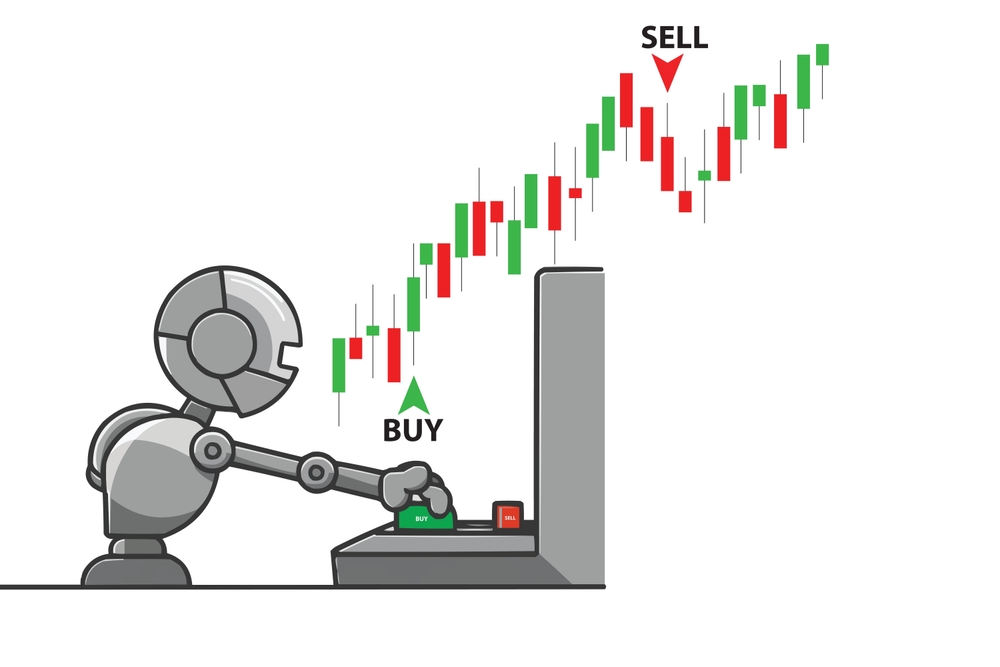Options trading has evolved into one of the most versatile and powerful financial instruments available to traders and investors alike. Unlike straightforward stock trading, options provide enhanced leverage, defined risk parameters, and multiple strategic approaches to capitalize on market movements. However, this versatility comes with complexity that demands a solid analytical framework. This is where trading indicators become invaluable tools in an options trader’s arsenal.
In this comprehensive guide, we’ll explore the most effective indicators that options traders rely on to make informed decisions. Whether you’re new to options trading or looking to refine your existing strategy, understanding these indicators can significantly improve your trading outcomes.

Why Indicators Matter in Options Trading
Options trading differs fundamentally from stock trading due to several unique characteristics:
- Time sensitivity – Options contracts have expiration dates, making timing crucial
- Volatility dependency – Option premiums are heavily influenced by expected market volatility
- Multi-dimensional analysis – Traders must consider price direction, magnitude, and timing
- Greeks influence – Delta, gamma, theta, vega, and rho measurements add complexity
Because of these factors, relying solely on price action is insufficient. Indicators help options traders quantify market conditions, identify potential entry and exit points, and assess the probability of successful trades.
Essential Indicators for Options Trading
1. Implied Volatility (IV)
Perhaps the single most important indicator for options traders, implied volatility directly affects option pricing and strategy selection.
What it shows: The market’s expectation of future volatility, derived from current option prices.
How to use it for options:
- High IV environments generally favor selling strategies (credit spreads, iron condors)
- Low IV environments typically favor buying strategies (debit spreads, long calls/puts)
- IV percentile or IV rank helps determine if current volatility is historically high or low
- Watch for IV crush after earnings or major events
Practical application: Before earnings announcements, implied volatility often increases as traders anticipate significant price movement. Smart options traders might sell options (like iron condors) before earnings to capitalize on inflated premiums, knowing that IV typically decreases sharply after the announcement.
2. Moving Averages
These trend-following indicators smooth out price data to identify the direction of the trend.
Types worth using:
- Simple Moving Average (SMA) – Equal weighting of all price points
- Exponential Moving Average (EMA) – Greater emphasis on recent prices
- Moving Average Convergence Divergence (MACD) – Shows momentum and trend direction
How to use them for options:
- Moving average crossovers signal potential trend changes
- Price crossing above/below key moving averages (50-day, 200-day) indicates strength/weakness
- Support/resistance at major moving averages can inform strike selection
- MACD histogram shows momentum, useful for timing entries and exits
Practical application: When a stock’s price crosses above its 50-day moving average while the MACD shows positive momentum, this might present an opportunity to purchase call options or bull spreads with 30-60 days until expiration.
3. Relative Strength Index (RSI)
This momentum oscillator measures the speed and change of price movements, identifying overbought or oversold conditions.
What it shows: Values range from 0 to 100, with readings above 70 typically considered overbought and below 30 oversold.
How to use it for options:
- Overbought conditions may signal opportunities for put options or bearish spreads
- Oversold conditions might indicate potential for call options or bullish spreads
- Divergence between RSI and price often precedes reversals
- RSI can help time entries for mean-reversion strategies
Practical application: When a stock reaches an RSI of 75+ after a strong uptrend, an options trader might implement a bear call spread to capitalize on a potential pullback while defining maximum risk.
4. Bollinger Bands
This volatility indicator consists of a middle band (usually a 20-day SMA) with upper and lower bands that expand and contract based on price volatility.
What it shows: Expected trading ranges and relative volatility levels.
How to use it for options:
- Band width indicates volatility levels, affecting option pricing
- Price touching upper/lower bands suggests potential mean reversion
- Bands provide dynamic support/resistance levels for strike selection
- Squeeze patterns (narrow bands) often precede significant moves
Practical application: During a Bollinger Band squeeze (when bands contract significantly), an options trader might purchase a straddle or strangle, anticipating a large move in either direction once volatility returns to the market.
5. Volume Profile
This advanced indicator shows the amount of trading activity at specific price levels over a selected time period.
What it shows: Areas of high and low trading interest, potential support/resistance zones.
How to use it for options:
- High-volume nodes often act as support/resistance for underlying assets
- Low-volume nodes suggest areas where price might move quickly through
- Point of Control (highest volume price) is often a magnet for price
- Volume profile helps identify high-probability price targets
Practical application: When the underlying stock is trading just below a significant high-volume node from the volume profile, this level likely represents resistance. An options trader might place the short call strike of a credit spread just above this level, expecting it to hold as resistance.
6. Option Volume and Open Interest
These indicators are specific to options markets and provide insights into trader positioning and liquidity.
What they show:
- Option volume indicates daily trading activity for specific contracts
- Open interest shows the number of outstanding contracts
How to use them for options:
- Unusual volume spikes may indicate smart money positioning
- High open interest suggests liquidity and validates support/resistance levels
- Put/Call ratio extremes can signal potential market reversals
- Volume concentration at specific strikes reveals market sentiment
Practical application: When there’s unusually high call volume and increasing open interest at strikes above the current price, institutional traders may be positioning for an upward move. Retail traders might follow this signal with bullish strategies.

7. Fibonacci Retracement Levels
These levels, based on the Fibonacci sequence, identify potential support and resistance areas during price retracements.
Key levels: 23.6%, 38.2%, 50%, 61.8%, and 78.6% retracements from significant price moves.
How to use them for options:
- Retracement levels provide natural strike selection points
- Confluence with other indicators strengthens potential reversal zones
- Extension levels (127.2%, 161.8%) offer profit targets
- Time-based Fibonacci tools help with expiration selection
Practical application: After a strong uptrend, when price pulls back to the 61.8% Fibonacci retracement level that coincides with the 50-day moving average, this confluence creates a high-probability support zone where call options might be purchased.
8. Average True Range (ATR)
This volatility indicator measures market volatility by calculating the average range between high and low prices over a specified period.
What it shows: The average expected daily price movement of the underlying asset.
How to use it for options:
- Helps determine appropriate strike width for spreads
- Provides realistic profit targets based on expected movement
- Useful for sizing positions appropriately
- Can inform stop-loss placement for directional options strategies
Practical application: If a stock has an ATR of $2, an options trader might choose strikes that are $4-6 apart (2-3x ATR) when creating a credit spread, balancing potential profit with probability of success.
Combining Indicators for More Effective Options Trading
While individual indicators provide valuable insights, their real power emerges when used in combination. Here are effective ways to integrate multiple indicators:
Volatility + Trend Assessment
Combining implied volatility readings with trend indicators creates a powerful framework:
- In high IV environments with clear trends (RSI showing strength, price above key moving averages), consider using vertical spreads in the trend direction.
- During high IV but sideways markets (price between moving averages, RSI range-bound), iron condors or calendar spreads may be appropriate.
- In low IV environments with emerging trends (MACD crossover, Bollinger Band breakout), long calls/puts or debit spreads offer favorable risk/reward.
Support/Resistance Confluence
The strongest support and resistance levels occur when multiple indicators identify the same price area:
- Fibonacci retracements aligning with volume profile nodes
- Key moving averages coinciding with previous swing highs/lows
- Bollinger Bands overlapping with round psychological numbers
These confluence zones provide high-probability strike selection points for credit spreads, iron condors, or target areas for directional plays.
Advanced Considerations
Market Internals and Breadth Indicators
For options traders taking positions on indices or ETFs, market breadth indicators provide additional context:
- Advance/Decline Line indicates overall market participation
- NYSE TICK shows buying/selling pressure intraday
- VIX term structure reflects expected volatility across different timeframes
- Put/Call ratio extremes often signal potential reversals
Sector Correlation and Relative Strength
When trading options on individual stocks, understanding sector performance adds valuable context:
- Stocks showing relative strength compared to their sector often maintain their trend
- Sector rotation can impact individual names regardless of technical indicators
- Correlation between sectors affects overall market volatility
Conclusion
Successful options trading requires a multifaceted approach to market analysis. While no indicator is perfect, combining these tools with proper risk management creates a robust framework for making informed trading decisions. The best options traders remain adaptive, recognizing that different market environments require different indicator emphasis.
Remember that indicators are tools, not crystal balls. They help quantify market conditions and identify potential opportunities, but they must be used within a comprehensive trading plan that includes position sizing, risk management, and constant evaluation.
By mastering these key indicators and understanding how they specifically relate to options strategies, you’ll be well-equipped to navigate the complex but rewarding world of options trading with greater confidence and precision.
Disclaimer: Options trading involves significant risk and is not suitable for all investors. The information provided in this article is for educational purposes only and should not be construed as financial advice. Always conduct thorough research and consider consulting with a financial professional before engaging in options trading.


